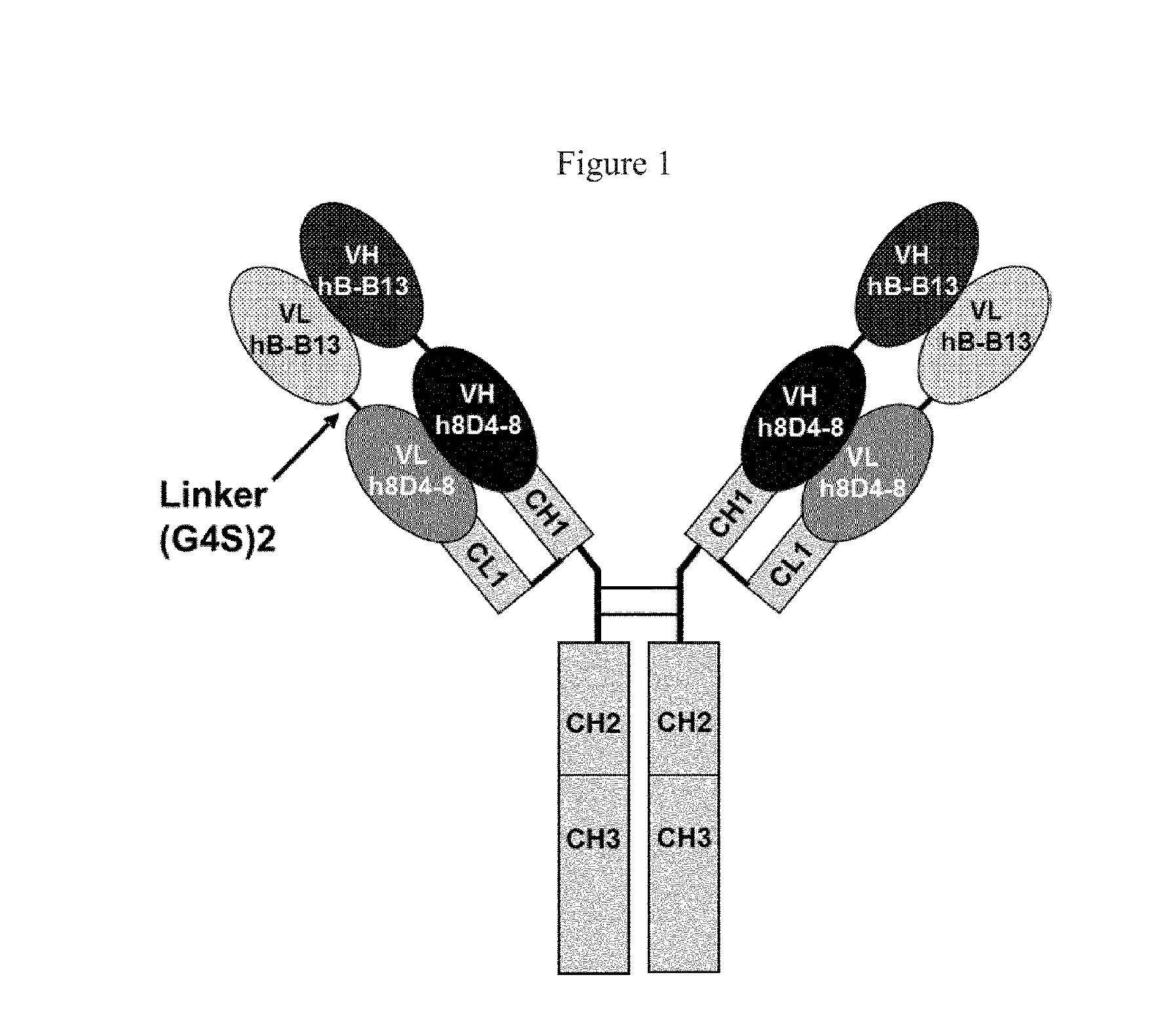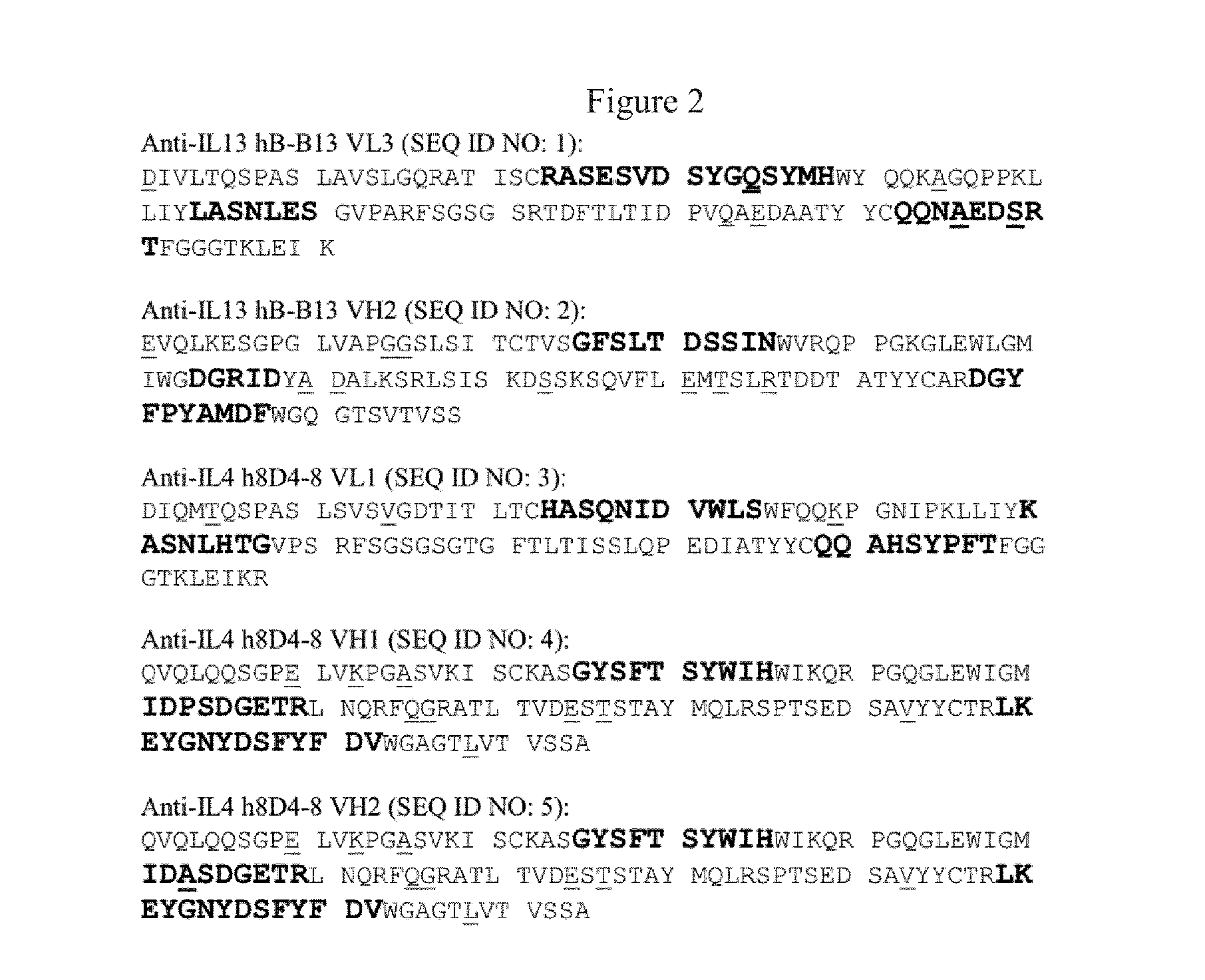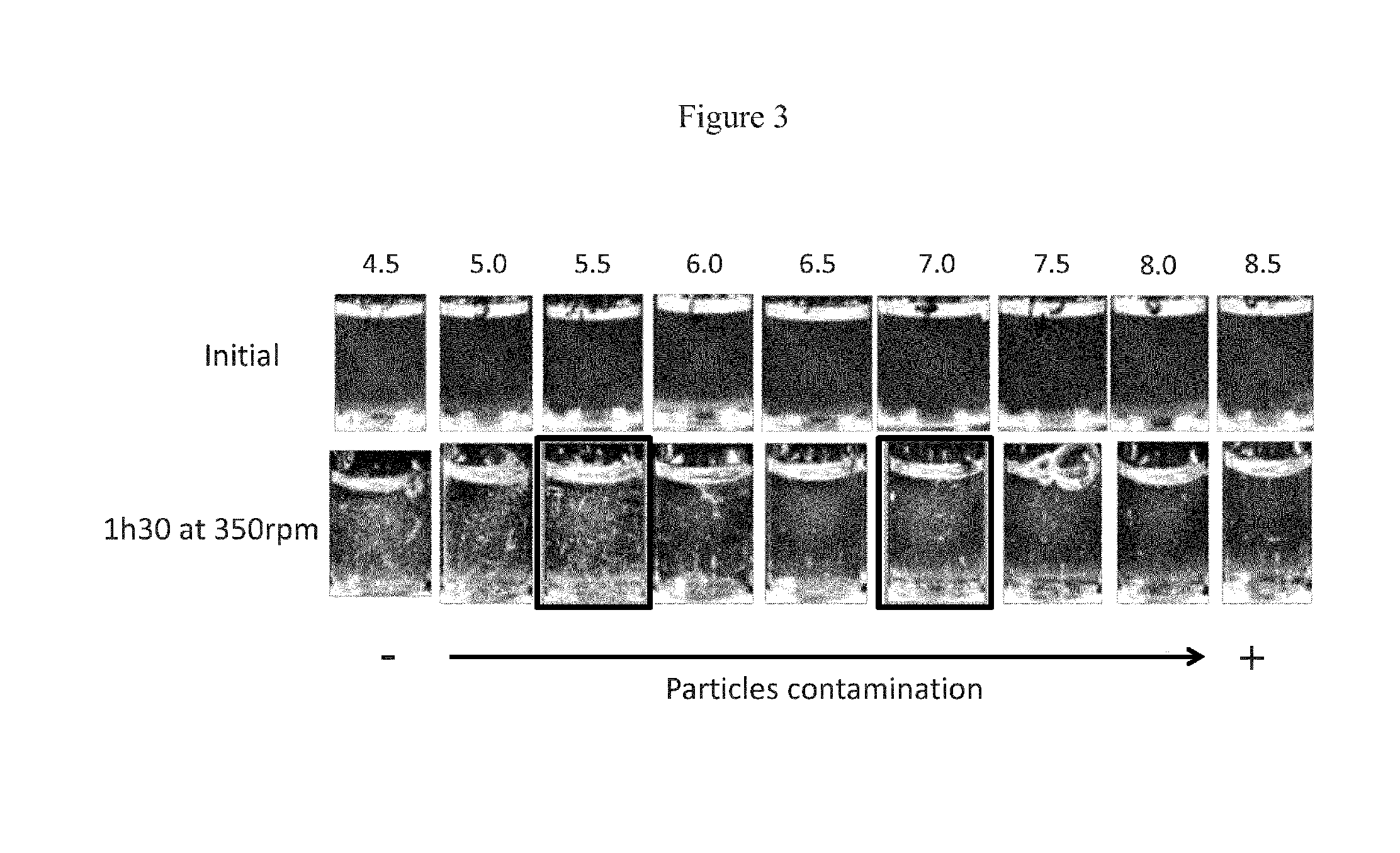Anti-il-4/Anti-il-13 bispecific antibody formulations
a technology of bispecific antibody and anti-il, which is applied in the direction of antibody medical ingredients, immunological disorders, drug compositions, etc., can solve the problems of affecting the stability of the formulation, increasing the viscosity, and changing the color of the solution, so as to reduce the ionic strength of the formulation and improve stability.
- Summary
- Abstract
- Description
- Claims
- Application Information
AI Technical Summary
Benefits of technology
Problems solved by technology
Method used
Image
Examples
example 1
pH Optimization
[0231]The first step in the formulation development process was to determine the optimal pH for the Lead Antibody formulation. In order to determine the optimal pH, a low concentration of Lead Antibody was used (1 mg / ml, as opposed to 100 mg / ml), as this low concentration of Lead Antibody was sufficient to determine the optimal pH. Table 2 shows the formulations tested in this study.
TABLE 2Assay #P5- pH screeningFormulation #P5-xBuffer systempHConcentration1Citrate 100 mM4.51 mg / ml2Citrate 100 mM5.01 mg / ml3Citrate 100 mM5.51 mg / ml4Citrate 100 mM6.01 mg / ml5Phosphate 100 mM6.51 mg / ml6Phosphate 100 mM7.01 mg / ml7Phosphate 100 mM7.51 mg / ml8Tris 100 mM8.01 mg / ml9Tris 100 mM8.51 mg / ml
[0232]In this study, Formulation 1 was not stable because it led to conformational instability for the Lead Antibody. Specifically, the Lead Antibody tended to unfold. Also, Formulation 9 led to deamidation. Thus, it was determined that the optimal pH for the Lead Antibody formulation would be w...
example 2
Buffer System / Ionic Strength (Salt)
Buffers
[0234]The next step in the formulation development process was to determine the optimal buffer for the Lead Antibody formulation. Several different buffers were tested, such as histidine, phosphate, Tris, and combinations thereof, in several different assays.
TABLE 3Assay #P6- Buffer system screening at 1 mg / mlFormulation #P6-xBuffer systempHConcentration1Histidine 10 mM6.51 mg / ml2Phosphate 10 mM6.51 mg / ml3Phosphate 10 mM7.01 mg / ml4Phosphate 10 mM7.51 mg / ml5Tris 10 mM7.01 mg / ml6Tris 10 mM7.51 mg / ml7Phosphate 60 mM7.01 mg / ml
TABLE 4Assay #P7- Salt screening at 1 mg / mlFormulation#P7-xBuffer systempHConcentrationAdditive1Phosphate 10 mM7.01 mg / mlNaCl 70 mM2Phosphate 10 mM7.01 mg / mlNaCl 140 mM3Tris 10 mM7.01 mg / mlNaCl 70 mM4Tris 10 mM7.01 mg / mlNaCl 140 mM
TABLE 5Assay #P13- Buffer / Salt screening at 100 mg / mlFormulation#P13-xBuffer systempH ConcentrationAdditive1Phosphate 10 mM7.0100 mg / ml—2Phosphate 10 mM7.0100 mg / mlNaCl 70 mM3Tris 10 mM7.0100 mg / m...
example 3
Surfactant
[0286]The next step in the formulation development process was to determine the optimal excipients for the Lead Antibody formulation. The excipients must be sufficient to stabilize the Lead Antibody, and be compatible with lyophilisation. Several different surfactants were tested, such as polysorbates and poloxamers, in various concentrations.
TABLE 7Assay #P12- Additives screening at 85 mg / mlBufferFormulation #P12-xsystempHConcentrationAdditive 1Additive 21Phosphate 10 mM7.085 mg / mlPS80 0.01% (w / v)Glycine 1% (w / v) (130 mM)3Phosphate 10 mM7.085 mg / mlPS80 0.01% (w / v)Sucrose 5% (w / v)4Phosphate 10 mM7.085 mg / mlPS80 0.01% (w / v)Trehalose 5% (w / v)5Phosphate 10 mM7.085 mg / mlPS80 0.01% (w / v)—6Phosphate 10 mM7.085 mg / mlPS80 0.1% (w / v)—7Phosphate 10 mM7.085 mg / mlPS20 0.01% (w / v)—8Phosphate 10 mM7.085 mg / mlPS20 0.1% (w / v)—9Phosphate 10 mM7.085 mg / mlPoloxamer 0.05%—(w / v)10Phosphate 10 mM7.085 mg / mlPoloxamer 0.1% (w / v)—11Phosphate 10 mM7.085 mg / ml——
TABLE 8Assay #P23- Additives screening...
PUM
| Property | Measurement | Unit |
|---|---|---|
| concentration | aaaaa | aaaaa |
| pH | aaaaa | aaaaa |
| ionic strength | aaaaa | aaaaa |
Abstract
Description
Claims
Application Information
 Login to View More
Login to View More - R&D
- Intellectual Property
- Life Sciences
- Materials
- Tech Scout
- Unparalleled Data Quality
- Higher Quality Content
- 60% Fewer Hallucinations
Browse by: Latest US Patents, China's latest patents, Technical Efficacy Thesaurus, Application Domain, Technology Topic, Popular Technical Reports.
© 2025 PatSnap. All rights reserved.Legal|Privacy policy|Modern Slavery Act Transparency Statement|Sitemap|About US| Contact US: help@patsnap.com



